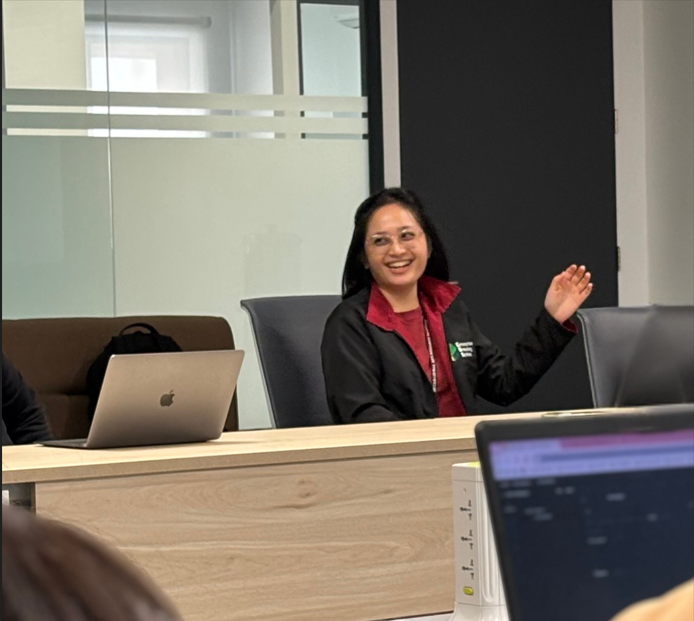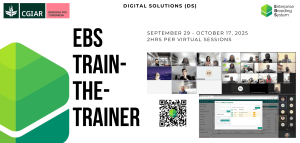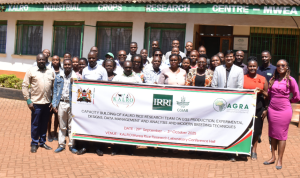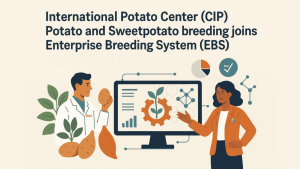Written by Jack Lagare
Becoming a high-performing individual is something that a lot of people strive for. However, a lot of times, it’s easier said than done. Where do we start? Do we have what it takes? Is it even worth it? How do we keep going? Those are some of the questions that Dinia Grace Gepte attempted to answer when she gave a talk on Engineering for Impact last August 7, 2025, at the International Rice Research Institute (IRRI HQ). Going beyond the theoretical, she focused on her four years of experience with the team to share the whats, the hows, and the whys that she personally applied.

During the session, Dinia reminded everyone about the importance of making small choices that lead to big impacts. Specifically, she gave concrete examples on what she does to improve her internal processes and walking the talk.
Be lazy
As surprising as that may sound, it’s not about doing less work. Instead, it’s a change of perspective about how we use our time. If we do something using the same steps and expect to do it again soon, it might be worth automating and allow us to get back some of our time for more impactful work. However, we need to be reminded that while we can automate anything, we don’t need to automate everything.
Put yourself in their shoes
When we start interacting with other people, things start to get a little bit interesting especially when we ask someone to do something for us. However, it is always beneficial to pause and ask yourself, “if I were in their place, what kind of information do I need in order to succeed?” While it may seem like more work, it is actually beneficial for both sides because you provide more clarity about what you need, thereby enabling others to do more valuable work.
Test-Code-Document
Test-Driven Development (TDD) has been proven to be an important guidepost in the field of software engineering. However, Dinia went one step further by emphasizing the need for documentation, saying this should not be an afterthought. Have you experienced looking at source code and having no clue why a certain technical decision was made? Having clear and updated documentation would have prevented the headache. Remember, README files are not placeholders. Investing in documentation early in the process is a gift that keeps on giving.
1+ pet project
During her four years with the team, Dinia initiated a couple of pet projects that quickly became integrated as part of the team’s internal processes such as automation scripts, code refactoring, and cutting-edge technology. She emphasized the need to reflect on what would help the team, try it out, and if it seems promising, share it with others to further grow the idea.
Keep learning
Learning does not necessarily have to be formal. There are countless opportunities to learn but the key is to be intentional about it. Dinia shares that one of her habits is to spend time reading articles on a variety of topics. Setting up an environment where learning is integrated makes a big difference.
Consistency
While all these practices seem magical, they did not materialize out of thin air. It is important to note that building a habit requires intentionality and consistency. As emphasized in the book Atomic Habits, even if it’s just a 1% improvement each day, the small changes add up and become significant.
The six points Dinia shared were inspired by the 5S methodology, which roots from the Japanese principles of Kaizen and Lean. It focuses on creating an organized, efficient, and safe workplace. While traditionally applied in manufacturing, its principles are highly adaptable to various professional environments, including software development, operations, data management, and administrative/communication roles.
Towards the end of the session, Dinia opened the floor for questions and encouraged everyone to ask about anything. Not surprisingly, most of the questions still went back to what she shared.
Throughout the session, Dinia shared a couple of important things that strongly influenced her work ethics: do not be afraid to experiment, ask questions, and intentionally explore new work areas to help you determine what to specialize in. She capped off the session by emphasizing the cornerstone of her practices — her fascination with frogs (a strong emphasis that these are not the live ones but the cute cartoon ones). That fascination stems from her most important motivation to ensure that everything she does exemplifies what it means to Fully Rely on God (F.R.O.G).



